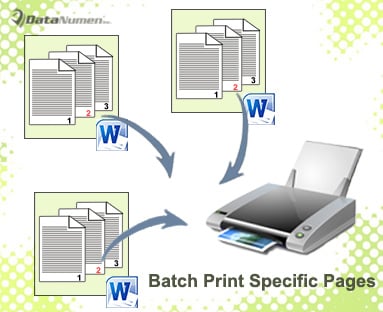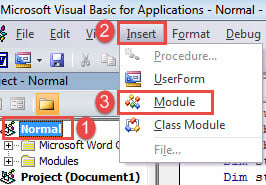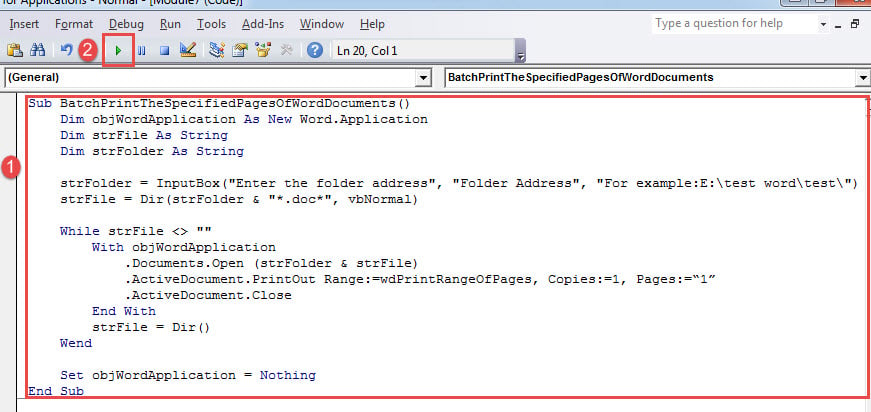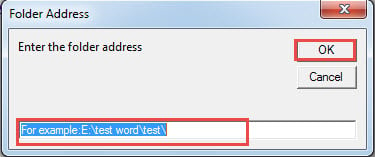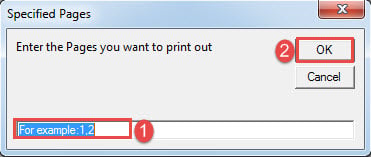In the article bellow, we want to share with you 2 quick ways to batch print specific pages of multiple Word documents.
Batch printing files is definitely a blessing for many of us. It saves time opening each file and also a couple of clicks. Now what about batch printing specific pages of multiple Word documents? For example, it would be useful to print the first page of several files at the same time. Also, to print the “Contents” or “References” pages of multiple files are also needed. So can we do it?
Yes, the answer is short. And the greatest thing is we are in no need of any third-party add-ins.
Method 1: Batch Print the First Page of Multiple Documents
- To start off, store all target documents under the same directory.
- Then click “Developer” tab and “Visual Basic” to open VBA editor. Or press “Alt+ F11” instead.
- Next click “Normal” and then “Insert”.
- Choose “Module” on the drop-down menu.
- Now there will be a new module. Double click on it to bring out the editing space.
- Paste the macro on the module:
Sub BatchPrintTheSpecifiedPagesOfWordDocuments()
Dim objWordApplication As New Word.Application
Dim strFile As String
Dim strFolder As String
strFolder = InputBox("Enter the folder address", "Folder Address", "For example:E:\test word\test\")
strFile = Dir(strFolder & "*.doc*", vbNormal)
While strFile <> ""
With objWordApplication
.Documents.Open (strFolder & strFile)
.ActiveDocument.PrintOut Range:=wdPrintRangeOfPages, Copies:=1, Pages:=“1”
.ActiveDocument.Close
End With
strFile = Dir()
Wend
Set objWordApplication = Nothing
End Sub
- Next click “Run” button or press “F5”.
- On the box popping up, enter the folder path where you keep files, such as “E:\test word\test\”. Don’t forget the last “\”. Click “OK” to proceed.
Just wait for the printing.
Method 2: Batch Print Specific Pages of Multiple Documents
In order to print specific pages of multiple documents, you can use the following macro.
Install and run macro with the same steps in method 1, but replace with this macro:
Sub BatchPrintTheSpecifiedPagesOfWordDocuments()
Dim objWordApplication As New Word.Application
Dim strFile As String
Dim strFolder As String
Dim strPages As String
strFolder = InputBox("Enter the folder address", "Folder Address", "For example:E:\test word\test\")
strFile = Dir(strFolder & "*.doc*", vbNormal)
strPages = InputBox("Enter the Pages you want to print out", "Specified Pages", "For example:1,2")
While strFile <> ""
With objWordApplication
.Documents.Open (strFolder & strFile)
.ActiveDocument.PrintOut Range:=wdPrintRangeOfPages, Copies:=1, Pages:=strPages
.ActiveDocument.Close
End With
strFile = Dir()
Wend
Set objWordApplication = Nothing
End Sub
Similarly, enter the folder path in the first box. Then input page number into the second one. To print consecutive pages, use a hyphen to separate the starting and ending numbers, such as “1-3”. To print inconsecutive pages, use comma as separator, such as “1, 3, 5”. For instance, “1, 3-6” means to print page 1, 3, 4, 5, and 6.
Repairing Tool You Need to Have
It happens that Word stops responding all of a sudden, leaving your document stuck. The possibility is high to inherit a broken file from a damaged Word. Sometimes the consequence is too overwhelming to bear. You may blame yourself on failing to take backups. But more important thing you need to do is obtain a recovering product to retrieve the data immediately.
Author Introduction:
Vera Chen is a data recovery expert in DataNumen, Inc., which is the world leader in data recovery technologies, including corrupted Excel and pdf repair software products. For more information visit www.datanumen.com
